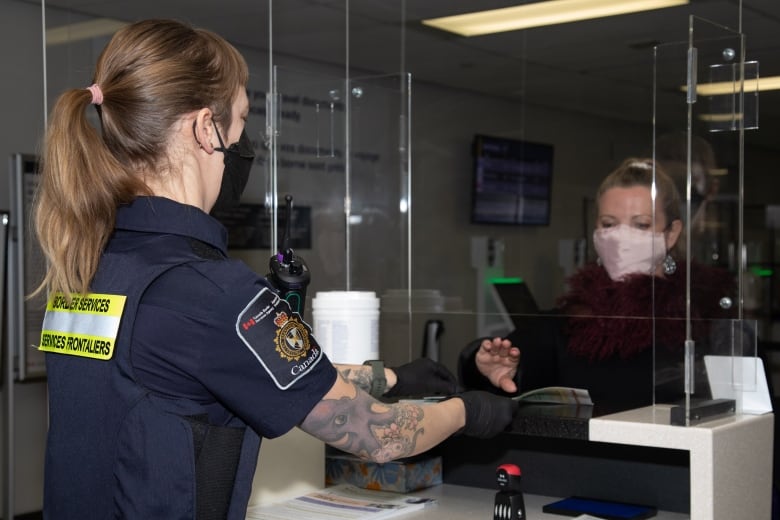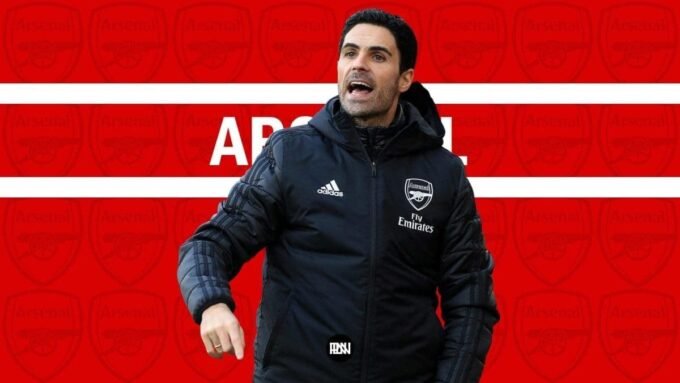Zipping through the Canada-U.S. border in 15 seconds. Facial recognition cameras at the airport to open an electronic gate. Sending your declaration to customs before you even get off the plane.
Those are just some of the changes in the works at the Canada Border Services Agency (CBSA) — partly as a result of the COVID-19 pandemic.
Denis Vinette, vice-president of the CBSA’s travellers branch, said the agency had been considering technological changes to the border — but the pandemic has allowed it to break through “glass ceilings” that were in the way.
When COVID-19 hit, the CBSA was confronted with a challenge, Vinette said — how could officers handle the “mounds of paper” and medical information the Public Health Agency of Canada required travellers to present?
The solution was to move to an internet cloud environment and to develop the ArriveCan app, he said.
“ArriveCan, even though we’ve got low travel volumes, has been really a game-changer,” said Vinette. “It’s allowed us to deal with information required in a new way and nimble way.”
The ArriveCan app also set the stage for a new system that has been introduced already at the Toronto and Vancouver airports. The system allows travellers returning to Canada to voluntarily send their customs declarations to CBSA before their plane even lands.
“By the time I arrive at the airport, all I’ll be doing is confirming my identity and my arrival,” Vinette said. “And CBSA and other border authorities will have decided already whether or not we have an interest in having an interaction with you.”
Once the system is rolled out, a family returning from Disney World, for example, could send the CBSA their advanced declaration and digital travel credentials.

“When they arrive, they come up to the kiosk, their identity is confirmed, they grab their bags, they get into the car and then they ask themselves a question — did I just cross the border? Did I forget to talk to the border services officer?” Vinette said.
He said the CBSA plans to expand the system to other airports and to add the advanced declaration function to the ArriveCan app so that travelers can submit both health and customs declarations at the same time.
The CBSA also wants to introduce the advanced declaration system for those travelling by cruise ship and rail, and for those crossing the land border.
Vinette said that, prior to the pandemic, the CBSA had brought the average time spent speaking with a customs officer at the land border down to an average of 55 seconds. With the new technologies, Vinette said, the agency hopes to bring that average time down to 15 seconds.
Facial recognition
Canadians and Americans with NEXUS trusted traveller cards have long been able to go through customs more quickly than others. Now, the CBSA is planning to add facial recognition to NEXUS kiosks at the airport.
“You will tap your card, it will take a picture and verify it against your passport picture that’s on file and confirm your identity and ask you one question — do you have anything to declare above your entitlements?” said Vinette.
In Toronto and Winnipeg, e-gates have been installed which open automatically once your identity is confirmed.
Vinette predicts that, in the future, passengers could use their mobile phones and an app like the current pay-by-phone service to breeze through the process.
“You might have something similar where you’ve done everything on your phone, you’ve got your digital travel credential encoded on your phone and you would just swipe your phone,” Vinette said. “It will verify that the passport, the travel credential, the person are all the same. Gate opens.”

Passengers also will still be free to opt for the traditional way of crossing the border, or to make their customs declarations verbally to an officer, Vinette said.
Some of the technological innovations the CBSA has in the works will be less visible to travelers.
The agency wants to increase its use of data analytics to help officers distinguish between low-risk individuals who cross the border frequently and those who pose a higher risk. It is also hoping that data analytics can help it detect trends and patterns that can help officers flag people who might be smuggling drugs or guns into Canada.
The Security Screening Automation project will replace manual searches for the immigration department with automated searches. Meanwhile, the CBSA has been implementing its air exit program, through which airlines provide it with information about their passengers.
Privacy concerns
Vinette said the CBSA has been working closely with the federal privacy commissioner’s office to ensure that the technological innovations it wants to implement respect privacy and IT security standards.
Vito Pilieci, spokesperson for the privacy commissioner’s office, said they have been consulted on the ArriveCan app and are about to begin a privacy impact review of CBSA’s advance declaration system.
Pilieci said the office has been back and forth with the CBSA about using facial biometric verification for NEXUS members and the CBSA’s increased use of data analytics.
Ann Cavoukian, a former Ontario privacy commissioner who is now executive director of the Global Privacy & Security by Design Centre, said it is important for travellers to consent to providing their images or information and to know how the information is going to be used by the government.
“Privacy and security have to be embedded into all of this,” she said.
For example, Cavoukian said, there is a difference between “one to one” facial recognition — where one photo is compared with one face — and “one to many” facial recognition systems used in places like the United Kingdom where someone’s face is compared with many other photos in a database.
Cavoukian said the information collected by the CBSA has to be stored securely, the data should be encrypted and it should be clear whether other government departments can access the information and the images collected.
“The potential for privacy problems is significant,” Cavoukian said.
Elizabeth Thompson can be reached at elizabeth.thompson@cbc.ca













Leave a comment